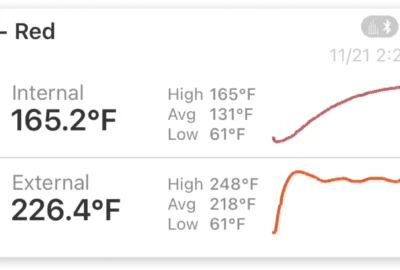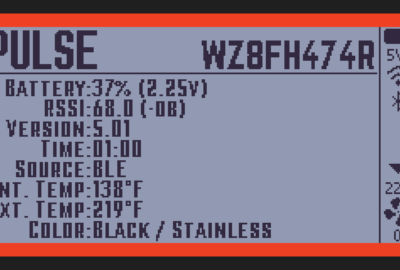Tech
Best Practices for Charging Li-ion Batteries
What are lithium-ion batteries, anyway? Let’s talk about their use cases and how to best maintain their charge for a long lifespan.
Lithium-ion batteries (Li-ion) are an industry standard for mobile power sources. They appear in our daily lives, from powering electronic vehicles, lawnmowers, chainsaws, and phones to smart thermometers like FireBoard 2 and Spark. When compared to other rechargeable batteries, lithium-ion batteries have a high energy density, which provides more power in a smaller, lighter package. When it comes to charging, Li-ion can be charged quickly and has a low self-discharge rate, meaning it retains its power when not being used.
Best of all, Li-ion batteries have no memory effect, meaning they can be charged at any percentage of charge without adversely affecting the overall battery life capacity. Any user of Ni-Cad batteries from years ago can attest to what a fantastic advancement this is.

The Lithium-ion batteries that are used in the FireBoard Spark instant-read thermometers.
How to Charge a Lithium-Ion Battery
Since these batteries have proven themselves and are here for the duration, we’ve compiled a list of best charging practices to maximize the performance of Li-ion (Lithium-ion) batteries.
- Use the charger provided by the device manufacturer or a compatible charger per their specifications. FireBoard2 devices are also USB-PD compatible, which means they can support a high charge rate while also providing power to drive a fan.
- Charge partially over fully. Since there is no memory effect, partially charging a Li-ion over a deep discharge-charge cycle is favorable. Complete charge cycles can deplete the life span of the battery. Generally, keep the battery charge between 20-80% before it drops to very low levels, and avoid a full charge.
- Full battery discharges should be avoided since they can reduce the long-term reliability of the battery as well as lead to capacity loss.
- Keep device software or firmware up to date. FireBoard devices use a smart battery charging chip, enabling us to release updates that optimize charging performance.
- Avoid charging in thermal extremes and use with a range of 68-77ºF, which can degrade performance and reduce the battery’s lifespan.
- For long-term or seasonal storage, maintain a charge level half of full capacity. Also, avoid storing a Li-ion battery in a fully discharged state.
- Replace when necessary. It is important to understand that all batteries have a limited life span and have a finite number of charge cycles they can receive. When you notice a significant decline in charge life, a battery replacement may be necessary. Always be sure to properly dispose of batteries!
About our Charging Chip
To maximize the performance of a Li-ion, manufacturers need to use charging integrated circuits, or ICs, designed to manage the charging process efficiently and safely.
FireBoard Labs sourced a smart battery charging chip from Texas Instruments with many features that monitor safe charging and operation. One such feature is a safety timer, which, as FireBoard Electrical Engineer Harold Tarun explains, “is used to prevent extended charging cycles due to abnormal battery conditions.” He says this integrated circuit also includes a “thermal regulation [that] reduces the charge current when the junction temperature exceeds a set amount.”

The Texas Instruments charging chip used by FireBoard is a robust chip that intelligently manages safe and efficient charging of the Li-ion batteries used in their devices.
The risks associated with lesser charging ICs include reduced battery lifespan and overcharging, which can damage the battery or cause a malfunction.
Harold also explained that the charging chip on the FireBoard 2 series features a boost mode that will increase the voltage when it is low to give longer usable battery life.

The Battery Charging Profile for the chip used in FireBoard’s FBX2 series of smart thermometers shows an increase in the battery voltage when it is low to give longer usable battery life.
Our 10000 mAh Battery Pack uses a Li-ion battery for all of the benefits mentioned in this article. If you’re looking to pick up a new mobile battery pack that recharges via USB-C cable, you’ve come to the right place!

FireBoard’s 10000 MAH battery pack can top off your FireBoard’s battery when a standard power outlet isn’t an option.









Leave a reply